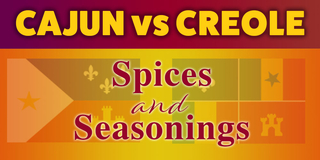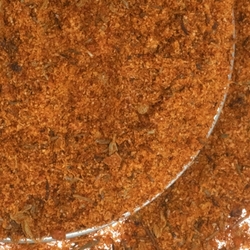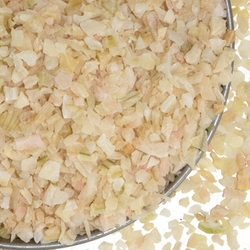What Is the Difference Between Cajun and Creole Spices?
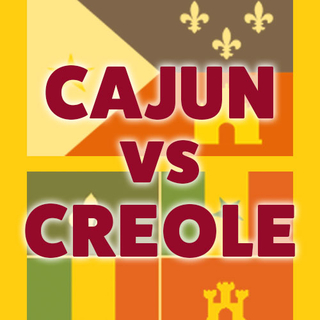
What Is the Difference Between Cajun and Creole Spices
Cajun and Creole have mistakenly been lumped into the same category, though they are two very unique cuisines. They each have their own unique history and back story. Some people will oversimplify the explanations of their differences saying that Cajun food is “country food,” while Creole food is “city food,” but this description neglects the subtle differences an origin story can provide. Understanding how each cuisine came to be will help you appreciate the differences in Cajun and Creole seasonings.
Cajun Cuisine
The Cajuns lived in the swamp regions of Louisiana. They had been exiled from France and made their way to Louisiana through Nova Scotia after an event historically referred to as “Le Grand Dérangement” or “The Great Upheaval.” Their food was originally thought to be the peasant food of the area since it relied heavily on ingredients indigenous to Louisiana. Alligator, turtle, and crawfish were extremely common in their meals. There was little to no waste in original Cajun cuisine. When a pig was butchered in a process called a “boucherie” for example, every part of the animal would be used. There is a type of Cajun sausage called Boudin that uses the pork meat, rice, and seasonings as the stuffing in a casing that may be made from the intestines of the pig. Sometimes pieces of the pig liver are included in the stuffing for extra flavor. Most meals are vegetable heavy. Cajun Cuisine is famously well-seasoned and pungent, which often leads people to mistake it for being spicy.
Creole Cuisine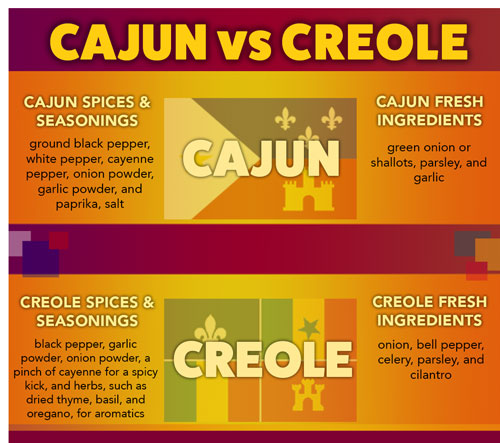
Creole cuisine is often considered a more polished version of Cajun cuisine. It stems from French cuisine though it often borrows from other cuisines of Europe, such as Italian and German. The spiciness and use of chiles in Creole cuisine cones from Spanish influences. Slaves of the wealthy were the first masters of Creole cooking, so they had more ready access to the different spices and food options from around the world. Some of the dishes that are traditional of the Creole cuisine simply could not exist in Cajun cooking, what with their unusually high number of different ingredients. You will find ingredients like butter in Creole cooking because they are much more accessible to the wealthy, whereas olive oil takes precedence in Cajun cooking. The access to this plethora of ingredients also led to Creole’s variety and variations- Cajun cooking is much more limited in its options of what can be made.
Ask someone from Louisiana the difference between these two cuisines, and they may brush you off with, “Oh, Creole cooking has tomatoes while real Cajun cooking doesn’t.” Of course, this is not the only answer, though it will help you determine exactly which kind of jambalaya you are eating. The real answer comes in the spices used for these specific types of cooking.
Cajun Spices
Cajun seasoning relies heavily on peppers. Black and white peppercorns, cayenne peppers, and bell peppers all play a heavy role in this cooking. Onions and celery are popular in Cajun seasoning, as well. These flavors are all easily found in Louisiana and are relatively cheap or home grown.
Creole Spices
Creole seasoning relies primarily on herbs such as basil, oregano, bay leaf, rosemary, and thyme. Parsley is a huge contender in Creole seasoning, so it is not used sparingly. If a dish feels particularly heavy, parsley will be added to give the food an herbal lift. These herbs come from the European tradition of cooking. Creole food uses chiles heavily as well, which comes from Spanish and Portuguese influence
There are some overlapping spices in these cuisines. Paprika, onion, and salt have a way of creeping into both, though they are predominantly used in Cajun cooking. If it can be grown in a home garden, you can find it in Cajun cooking. Onion, celery, and some pepper would usually form the base of the traditional one-pot Cajun meal
The only place you can get legitimate Creole or Cajun cooking is Louisiana, or if you’re lucky, in the kitchen of a person who is from those areas. These recipes are carefully taught from generation to generation by people who learned from their ancestors, and that tradition continues into the present. Though these cuisines may seem more similar today than they have in the past, they still retain their subtle uniqueness.

